TRENDS
Next Level Product Management: how to bring your product to life in 3D, VR & AR.
March 1, 2024 · 8 min read
Today’s consumers and B2B buyers have high expectations of online experiences. And they’re right: they’re buying increasingly complex (and expensive) products entirely online, and they want to be sure they’re getting exactly what they want. Developments in product configuration, VR, and AR are also moving fast, and your customers are often already spoiled by experiences on other digital platforms. In this short paper, we’ll discuss 7 essentials for next-level product management.
We also increasingly buy, work and learn online. So we need better interaction. If you work in retail and e-commerce, you are looking to provide that interaction, present your products more attractively and deepen customer relationships. And because you know that interactive product configuration, AR and VR provide more engagement, you are looking for ways to make that technology work for you too.
Streamlining processes.
In addition, you also want to streamline the process behind the online experience. Because if you handle product and content management more efficiently, you can serve more channels and offer more products, with better product content.
Challenges and manufacturing.
In manufacturing companies we see additional challenges. There a lot of complexity comes from the products themselves. The design and development process, including the creation and testing of prototypes, has long been done in advanced 3D tools in this sector, but the connection with product management is usually missing. While it is precisely in the industry that it is important to be able to show the end customer what the product looks like and how it works.
Efficiency and integration.
What we’re seeing across all industries is that supply chain managers and logistics departments are looking to manage product information more efficiently and also integrate it better with their other processes. Marketing and Sales are looking for better integration with product development and design, and new ways to showcase their products in VR and AR.
What PIM is and why it is crucial for your business.
But before we delve further into the possibilities of 3D in product management, we want to talk about the importance of good product information management in general. Because without the right tools, managing product content and information is frustrating, time-consuming and error-prone.
We often see employees entering the same article 6 times, while only the color differs. Or content that goes live without approval. Or product managers who click and scroll endlessly, just to get a feel for what is online and what the quality is.
Grow further by doing better.
More and more companies are realizing that this needs to improve before they can accelerate in other areas. They also understand that better product content sells better. Product content that clearly shows in advance what the product is and what the exact properties and specifications are ensures fewer returns and errors, a better customer experience and consistent branding across all channels. By switching to integrated product information management (PIM – Product Information Management) you can then grow further.
AI is starting to emerge, 3D is lagging behind.
For example, AI integration makes it easy to create different versions of content, dashboards and reports show the quality of the content, 'bulk edit' functionality reduces manual work and SEO becomes easier. But the current generation of product information systems is still strongly focused on text and image content. We are now seeing more and more integration of AI, but new technologies such as product configuration, VR and AR are not yet advancing that fast.
Taking your PIM into the AI and 3D era: 7 things you’ll need in the next 3 years.
If you want to stay on top of complexity in the coming years and get the most out of 3D and AI technology across your entire business, here are the 6 things you need:
1. Generative AI.
Every company we speak to is looking for ways to benefit from generative AI. It makes sense, because you can use text and image generation to quickly create many variations of your product content. This allows you to personalize content or adapt it to a channel. But to do that well, that AI needs to work where you work on your product content: in your PIM. Because only then can you really become more efficient and effective. Other AI tools often do not integrate with the PIM or with the rest of your applications, so you still have to rely on manual work.
2. Automated data entry.
Without the central and user-friendly reading and normalization of product content, you will always be stuck with an inefficient data process. Your suppliers always deliver data in a slightly different technical format, with slightly different names, units, etc. Moreover, it is difficult to determine 'by eye' what the quality of the delivered data is. In order to stay up to date and to be able to monitor the quality of product content, you must automate the reading and transformation of it.
3. Multichannel delivery of 3D content.
Central product information management helps you deliver exactly the right content to each channel. That is exactly what you want to be able to do with 3D content. This makes it easier to meet the demands of different markets, customers and channels. Because more and more channels are emerging that can display 3D models with an interactive user experience and you can bet that your competitors will use those possibilities.
4. Detailed visualizations.
The 'offline' component is disappearing from more and more customer journeys. This means that the demands on the online customer journey are becoming increasingly higher. With product photos alone, you will no longer be able to make it in the coming years. By visualizing physical products clearly and in detail, you can answer many questions that online buyers have. This also includes, for example, highlighting unique product features with interactive touchpoints: for example, let people click on the USB port of a laptop to see the specifications. Or do the same with the allergy information on a package of cookies.
5. Intuitive content management.
Product content is not static and you are updating, expanding and improving it every day. With the possibilities of 3D, AR and VR, the option to create real-time product and packaging combinations is added. A system that allows you to collaborate seamlessly and intuitively on content, also in an international setting, not only saves time and money by eliminating the need for physical prototypes, mock-ups and photo shoots, it also ensures that you can very quickly create customized content for every customer and every market.
6. Unlimited real-time configuration options.
We are buying more and more different products online and the products we buy are becoming more and more complex. In both B2B and B2C we see that complicated, technical products are also sold online without the intervention of an advisor or salesperson. That is good for the supplier, because they can deploy their people elsewhere. And it is good for the customers, because they can choose when and where they make their purchase. While they are certain that they get exactly what they want thanks to the personalized experience.
7. Extensive integration from design to sales.
Since design and development of most products already takes place in advanced 3D software, it is a logical next step to transfer the product data that is generated there directly to the PIM. This will give you a lot of speed, because you no longer have to wait until a product actually exists before you offer it online. The need to create new content for every new variant or color of an article is completely eliminated. This makes you fast, efficient and customer-friendly.
How to make it happen.
But how do you get all that done? Although technology in product configuration, AR, VR and 3D modeling has made huge strides in recent years (not to mention AI), no PIM vendor had built in these functionalities. That’s why we teamed up with MetaChef.
We built a PIM with the 3D and AI capabilities that will help our customers move into the future. A system that can take 3D models directly from the design department to your commerce channels, supplemented with standard models of thousands of items from our 3D library. A central platform that makes all product content, including 3D models, accessible in both 2D and 3D and AR and VR experiences.
Better content, less waste.
On this platform you quickly make the step from product development to commerce. Product content is of higher quality and also identical everywhere. No more different information on website, packaging or anywhere: if something changes, you adjust it centrally and even your product images and configurators change with it while the source of the information can always be traced. Moreover, you have, certainly in food, sustainability gains because you have less waste.
The product platform for your future.
In this solution, ConnectingTheDots delivers their internationally proven PIM system and MetaChef adds a 3D catalog, a 3D configurator and a 3D content creator. Together, this gives you the product platform that will be the basis for great successes in developing, marketing and managing your products.
Want to know more?
Want to learn more about Next Level Product Management with ConnectingTheDots PIM and MetaChef? We'd love to talk about it with you and hope for a great 3D product management challenge from you.

Written by: Arnout Schutte







